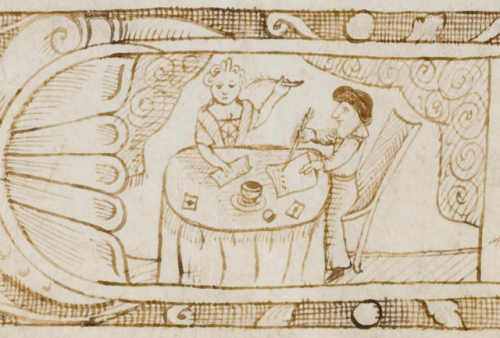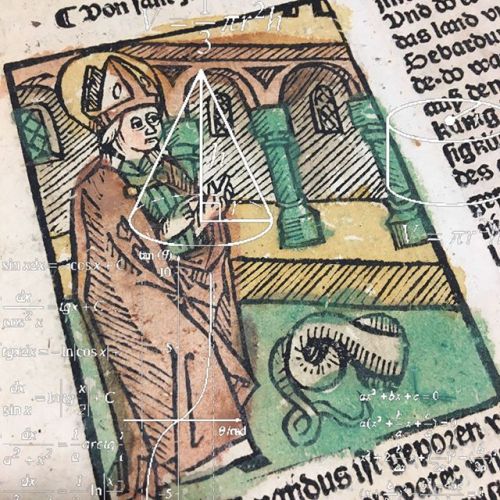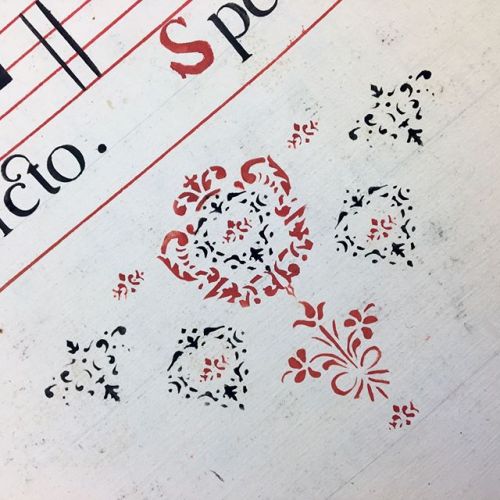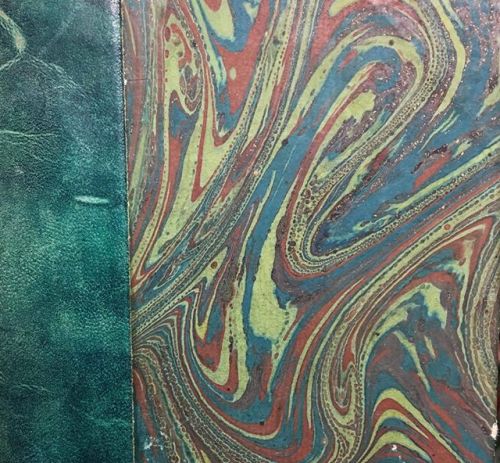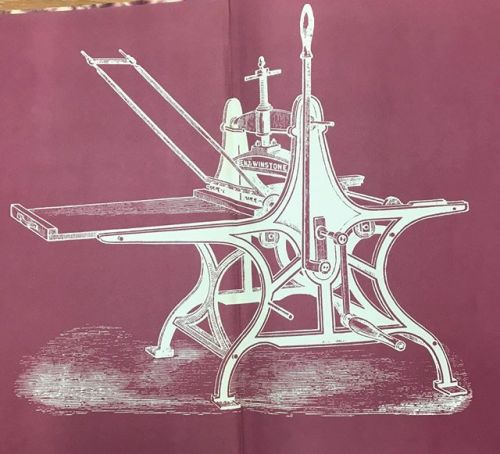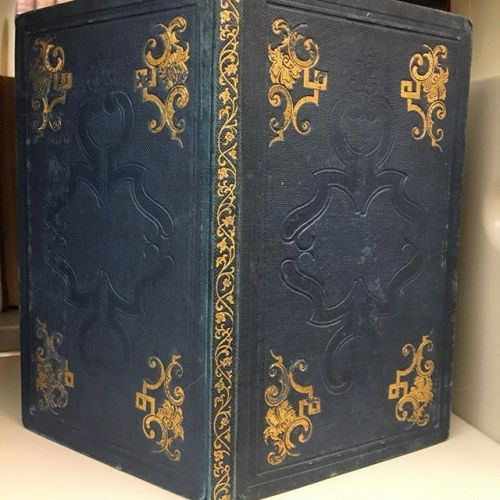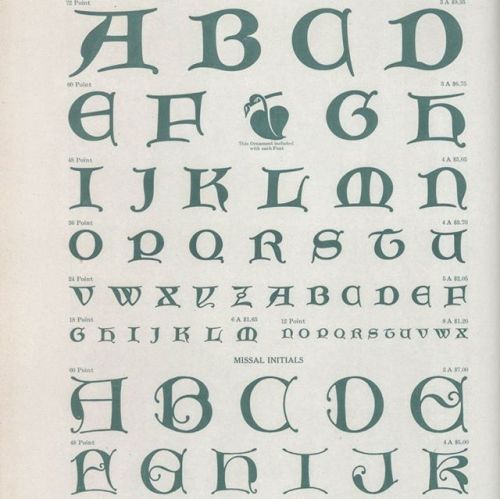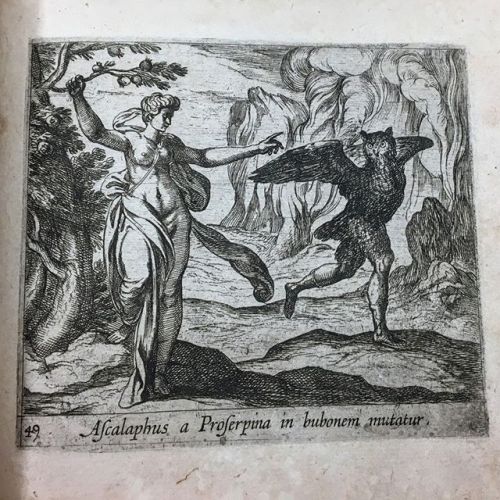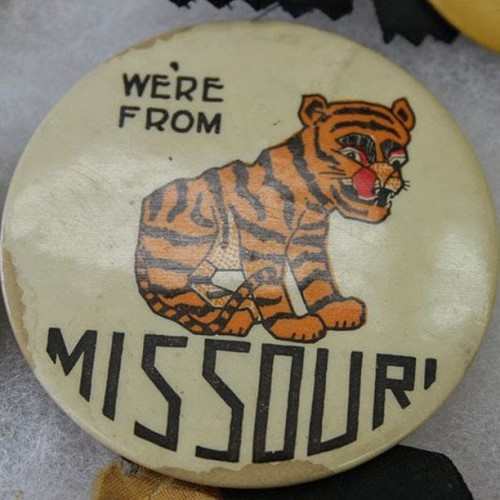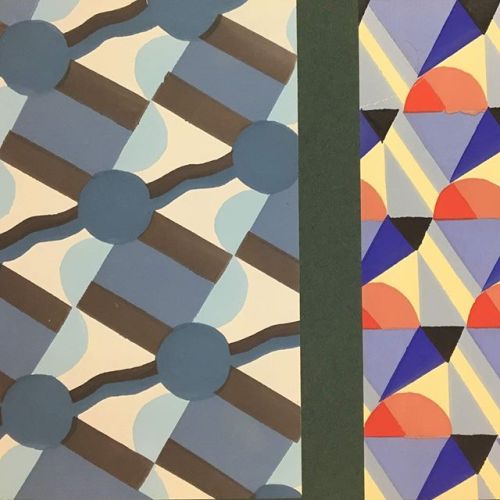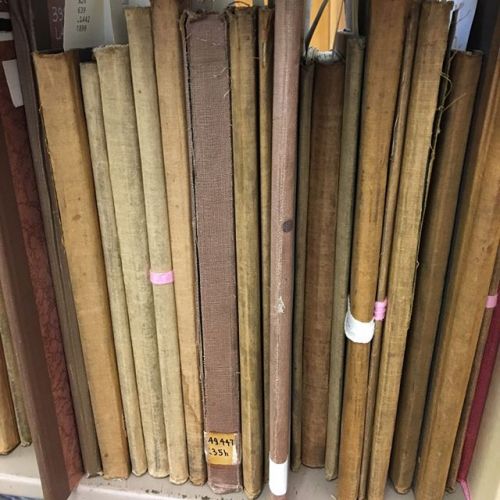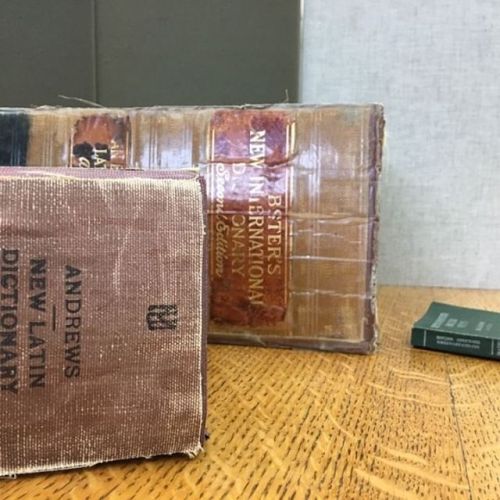#special collections




Guest Post from John Martin Rare Book Room
Located at Hardin Library for the Health Sciences
UNKNOWN.Medicinal plants scroll from Japan’s mid-Edo period. Estimated date of creation is between 1727 and 1800. 29 x 800 cm.
This book blends all of the things that make working with our collection so rewarding: the paper, how it feels, the artistry, how it smells, the printing, construction, content, and evidence of the life it has lived. Simply known as the Medicinal plants scroll, it is an 8-meter scroll from Japan’s Edo period (1603-1867) containing beautiful hand-painted illustrations.
Japanese hand-scrolls, or emakimono, are not meant to be read or displayed completely unfurled. Rather, each panel should be read, one at a time, starting at the right and reading to the left. The right hand works in concert with the left to roll up the scroll at the same time as a new panel is exposed. This is considered especially important for narrative scrolls, such as the famous Tale of Genji.
Emakimono, distinguished from hanging vertical scrolls, or kakemono, are a form of communication almost as old as the Japanese written language. Starting with characters imported from China in the 5th century, the Japanese written language has evolved substantially since then. The use of Chinese characters, however, lasted for centuries. In fact, many of the Japanese books in the Rare Book Room collection use Chinese characters, including the Medicinal plants scroll.
TheMedicinal plants scroll is, as its name suggests, a catalog of native Japanese plants, describing their habitats, flowers, fruits, and medicinal uses. Each brief description is accompanied by a hand-painted illustration of the plant, usually in bloom. Thanks to the generosity and hard work of our colleague, Tsuyoshi Harada, our Japanese Studies Librarian, we have a detailed translation of the scroll.
Due to his efforts, we have identified each plant, including Cyrtosia septentrionalis in the image in the introduction, also called Yamashakujo or Tuchiakebi, and Panax japonicus, or Japanese Ginseng, seen here. Unlike traditional ginseng, this guide recommends avoiding the very bitter root of P. japonicus and instead using the root hairs.
The scroll also includes references to other medicinal plant resources available at the time. We are excited to see if we can locate any of these as well.
The scroll is in excellent condition. There is very minor staining here and there, but the original paper is otherwise spotless. It has been rebacked fairly recently with a modern paper containing gold flecks. Replacing the paper support on the back as the scroll ages is a customary practice. Emakimono are not made from a continuous roll of paper, but rather equally sized sheets that have been cleverly glued together, combining long fibers that extend out each side of the sheets. The layers of backing paper then add support and durability.
–Damien Ihrig, curator






#VoicesfromtheStacks
The Star Gazer: Planisphere PoetryandLunar Volvelle, both by Monica Ong
This week we are looking at two works by book artist Monica Ong. Ong is a 2nd generation Chinese-Filipino American who was born and raised in Chicago, IL.
The Star Gazer: Planisphere Poetry depicts the Chinese night sky from the northern hemisphere. It is based on the Soochow Astronomical Chart of 1193. This star chart holds small phrases of beautiful prose weaved around constellational lines to form the poetry within this piece. Taken directly from her Proxima Vera site, there are a few steps to read this structured poem:
“To view the stars, turn the disc to align the desired date with the hour of night. Face south and hold the planisphere overhead with the corner marked North facing north. The map will reveal a celestial poem that awaits you among the asterisms. Let the eyes wander and read aloud to someone dear.”
Ong not only wrote the poetry for this piece, but she also designed the art and construction of the book, including its typesetting. She used gold foil stamping, die cutting, and had it put together by a letterpress studio in Syracuse, New York.
We have another one of her items as well, Lunar Volvelle, which can be interpreted in any way you wish and viewed in our reading room!
Happy gazing. ⭐
-Matrice Y, Special Collections Jr. Olson Graduate Assistant







#VoicesFromThe Stacks
Mexico: The Day of the Dead
This anthology, compiled and edited by Chloë Sayer, opens with a quote by Octavio Paz, Mexican poet, from his book The Labyrinth of Solitude: “The word death is not pronounced in New York, in Paris, in London, because it burns the lips. The Mexican, in contrast, is familiar with death…”
For many with roots in Mexico (and other Latin American countries), November 2 marks the last day of the holiday celebrating loved ones who have passed away, with traditions that date back to Aztec and other Mesoamerican civilizations. A holiday that allows people to reconnect with the dead, Día de los Muertos is marked by the making of altars with beautiful ofrendas (offerings) decorated with skulls, marigolds, bread, drinks, and other personal memories and photos of the deceased.
This box of artefacts includes a book, a shiny green papel picado cutout, copies of art by Frida Kahlo and Diego Rivera, and art by Mexican artists listed below. At Special Collections & Archives, we are honored to have work highlighting such an important cultural holiday for many.
Tin skeleton (milagro) by Maurilio Rojas
Papercut by Aarón Velasco Pacheco
Prayer-sheet and Posada print by Arsacio Vanegas Arroyo
Poster of Diego Rivera’s mural Day of the Dead
[Mural:The Day of the Dead. Copyright Diego Rivera]
Feliz Día de los Muertos!

–Rachel M-H, Special Collections Olson Graduate Assistant






Guest Post from John Martin Rare Book Room
At Hardin Library for the Health Sciences
Early Spanish anatomy book from Manuel de Porras.
DE PORRAS, MANUEL. Anatomia Galenico-moderna / compuesta por el doctor Don Manuel de Porras, cirujano de su magestad, y de los Reales Hospitales de la Corte, y Examinador del Real Protomedicato [Modern Galenic anatomy: composed by Dr. Don Manuel de Porras, surgeon of his majesty, and of the Royal Hospitals of the Court, and Examiner of the Royal College of Physicians]. Printed at the Imprenta de Musica by Bernardo Peralta in 1716.
De Porras was a surgeon to King Felipe V (the first of the French Bourbon dynasty to lead Spain) and an instructor of surgery and anatomy. Felipe instituted many reforms, mostly to reshape the monarchy and consolidate power, but also to improve Spanish science and medicine. This included the importation of ideas and practitioners from universities throughout Europe. De Porras leveraged this knowledge transfer to create his most well-known book, Anatomia Galenico-moderna, an anatomy book for surgeons.
Criticized as, amongst other things, being “unoriginal,” de Porras nevertheless was the first to synthesize ancient thinking on anatomy with the latest from the European masters, and write in his native Spanish - not the traditional, but less accessible, Latin or Greek. Anatomia… would increase the accessibility of this knowledge and inspire new Spanish anatomical works throughout the 18th century.
Anatomia… is the first Spanish anatomy book published in the 18th century. It also represents a concerted effort on the part of the new king and the doctors and surgeons of Spain to create medical works in Spanish. This was meant to make these texts more accessible and to burnish the reputation of Spanish medicine as an equal to their European peers.
De Porras’s work is also unique in the number of prefaces included in the 1716 printing. The majority of the seven prefaces, all by different authors, spend a considerable effort to defend Spanish medical science from past European critics. They offer Anatomia…as proof that Spain was no longer a scientific and medical backwater.
Regardless, the book was not the most well-received. The book’s most vocal critic was Martin Martínez, one of king Felipe’s physicians and also an anatomist. Martínez took a great interest in the improvement of medical education and played a major role in establishing the anatomical amphitheater in the general hospital at Madrid. His main complaint about de Porra’s work was the nature of the language and vocabulary de Porras employed, given its intended audience - surgeons. He felt the book adequate enough for learned physicians, but too confusing for the more brutal and straightforward work of the surgeon.
This complaint highlights the contentious relationship between physicians and surgeons, two very different professions at the time. Among Martínez’s several works is his own anatomy book, Anatomia completa del hombre [Complete anatomy of man], which was first published in Madrid in 1728 (we have his second edition, printed in 1745). A comprehensive work, it became a popular text with at least six editions.
Anatomia… contains several engraved illustrations by Matías de Irala Yuso, who also contributed illustrations to Martínez’s Anatomia complete del hombre. The illustrations are mostly anatomical, but he does include an engraving of de Porras and another of St. Francis Xavier receiving medical treatment.
-Curator Damien Ihrig
Purim is coming - and it’s International (Working) Women’s Day too! ✊ So I thought I would share some images of Esther as a working woman - a scribe! - in tribute to the many women who continue to mentor and inspire me. These images are from illustrated megillot from Italy, Germany, and Holland, ca. 1650-1750: the earliest images, to my knowledge, of female scribes in Hebrew manuscripts (although I’d be happy to be corrected!).
Post link
I stumbled across these absolutely fabulous #EndoftheWeekPapers as I was browsing through Jugend today – aren’t they cheerful? Jugend in 1920 is rather different from its first issues in 1896, but the #endpapers are always wonderful.⠀ 053 M921⠀
.⠀
.⠀
.⠀
.⠀
.⠀
#jugend #jugendstil #artdeco #birbs #parrots #deco #bookbinding #bibliophile #bookstagram #booklover #rarebooks #specialcollections #librariesofinstagram #iglibraries #mizzou #universityofmissouri #ellislibrary #ifttt
Post link
“Do you think that perhaps Death sleeps because you are healthy? Be careful: he arrives suddenly."⠀
This little book is called "The Messenger of Death,” and the captions really are #SpineTingling. #HappyHalloween, y'all!⠀
BX2180 .D65 1645⠀
.⠀
.⠀
.⠀
.⠀
#skeletons #creepy #halloween #woodcutwednesday #mementomori #bibliophile #bookstagram #booklover #rarebooks #specialcollections #librariesofinstagram #iglibraries #mizzou #universityofmissouri #ellislibrary #ifttt
Post link
Apparently it is already November? Not sure when that happened.⠀
NE905 .S2⠀
.⠀
.⠀
.⠀
.⠀
#bibliophile #incunable #woodcut #meme #mathmeme #november #timeflies #bookstagram #booklover #rarebooks #specialcollections #librariesofinstagram #iglibraries #mizzou #universityofmissouri #ellislibrary #ifttt
Post link
Happy Halloween! I was planning to post some traditionally skeletal #bookguts, but this little murder cherub initial from Vesalius smiled its way straight past #SpineTingling and all the way into chilling. Look at that razor!⠀
QM21 .V418 1555 ⠀
.⠀
.⠀
.⠀
.⠀
#skeletons #cherubs #bookguts #sweeneytodd #vesalius #anatomy #bibliophile #bookstagram #booklover #rarebooks #specialcollections #librariesofinstagram #iglibraries #mizzou #universityofmissouri #ellislibrary #ifttt
Post link
Happy #TattooableTuesday! John just got back from #Matrices2018 @friendsofdardhunter and brought this amazing 18th-century stenciled antiphonal with him. It isn’t cataloged yet, but you can see it in our reading room! #newacq⠀
.⠀
.⠀
.⠀
.⠀
#stencils #manuscript #tattoos #ink #paper #bibliophile #bookstagram #booklover #rarebooks #specialcollections #librariesofinstagram #iglibraries #mizzou #universityofmissouri #ellislibrary #ifttt
Post link
It’s #MarbledMonday, but with sparkles! Can you see the tiny swirls of gold threading through the marbling on this 1881 hardcover?⠀
PQ9069 .F5 1881⠀
.⠀
.⠀
.⠀
.⠀
.⠀
#marbledpaper #sparkles #bookbinding #glitter #fancy #bibliophile #bookstagram #booklover #rarebooks #specialcollections #librariesofinstagram #iglibraries #mizzou #universityofmissouri #ellislibrary #ifttt
Post link
It was another good week for #EndoftheWeekPapers! We found this fantastic depiction of a lithograph press in a book about Victorian printing.⠀
NE2540 .W356 1970⠀
.⠀
.⠀
.⠀
.⠀
.⠀
#printing #handpress #lithographs #victorian #endpapers #bibliophile #bookstagram #booklover #rarebooks #specialcollections #librariesofinstagram #iglibraries #mizzou #universityofmissouri #ellislibrary #ifttt
Post link
Although I would hate to cast doubt on the efficacy of these Famous Purging Sugar Plums, I must admit that it’s pretty nice to live in an era where I can get vaccinated against diseases instead. Have you gotten a flu shot yet this year?⠀
RC178.F8 M37 1721⠀
.⠀
.⠀
.⠀
.⠀
.⠀
.⠀
#science #flushot #wellness #sugarplums #flu #bibliophile #bookstagram #booklover #rarebooks #specialcollections #librariesofinstagram #iglibraries #mizzou #universityofmissouri #ellislibrary #ifttt
Post link
Even the narrowest books can be #SpineTingling – just look at the tooling on this copy of Juan José Flores’ collected poetry!⠀
PQ8219.F6 O2 1846⠀
.⠀
.⠀
.⠀
.⠀
.⠀
#publishersbinding #goldtooling #tooling #bookbinding #victorian #poetry #shelfie #bibliophile #bookstagram #booklover #rarebooks #specialcollections #librariesofinstagram #iglibraries #mizzou #universityofmissouri #ellislibrary #ifttt
Post link
It’s #TypeTuesday! I absolutely love our type specimen books, and these two typefaces from the American Type Founders Company – Caxton and Missal, respectively – are charming.⠀
Z250 .D27 1912c⠀
.⠀
.⠀
.⠀
.⠀
.⠀
.⠀
#typography #type #graphicdesign #caxton #fonts #fleuron #bibliophile #bookstagram #booklover #rarebooks #specialcollections #librariesofinstagram #iglibraries #mizzou #universityofmissouri #ellislibrary #ifttt
Post link
Has it felt like a long semester already? Today’s #MondayMotivationOwl is here to remind you it could be worse: at least Persephone hasn’t turned you into a bird.⠀
NE662.T4 A37⠀
.⠀
.⠀
.⠀
.⠀
#owls #motivationowls #monday #persephone #metamorphoses #pomegranates #engraving #ovid #bibliophile #bookstagram #booklover #rarebooks #specialcollections #librariesofinstagram #iglibraries #mizzou #universityofmissouri #ellislibrary #ifttt
Post link
Happy #Homecoming, @Mizzou!⠀
This button, along with many others, can be found in the university archives.⠀
.⠀
.⠀
.⠀
.⠀
#football #tigers #gotigers #rarebooks #specialcollections #librariesofinstagram #iglibraries #mizzou #universityofmissouri #ellislibrary #ifttt
Post link
Kunstgewerbliche Schmuckformen für die Fläche! Or, more concisely, Decorative Designs for Surfaces. Our volume of this periodical probably dates to the 1930s: there were 21 in total, published between 1909 and 1939.⠀
705 K963⠀
.⠀
.⠀
.⠀
.⠀
#artdeco #deco #wallpaper #decorativeart #german #modernism #colortheory #retro #bibliophile #bookstagram #booklover #rarebooks #specialcollections #librariesofinstagram #iglibraries #mizzou #universityofmissouri #ellislibrary #ifttt
Post link
How’s this for some truly #SpineTingling horror? Thankfully, all of these innocent books are on their way to be rescued from their acidic bindings: another happy ending thanks to our physical processing magicians!⠀
.⠀
.⠀
.⠀
.⠀
#conservation #preservation #acidichousing #bibliophile #bookstagram #booklover #rarebooks #specialcollections #librariesofinstagram #iglibraries #mizzou #universityofmissouri #ellislibrary #ifttt
Post link
bröther may i have some wörds⠀
(Or: a librarian’s homage to #DictionaryDay.)⠀
.⠀
.⠀
.⠀
.⠀
#dictionaries #webster #meme #ilikebigbooks #bibliophile #bookstagram #booklover #rarebooks #specialcollections #librariesofinstagram #iglibraries #mizzou #universityofmissouri #ellislibrary #ifttt
Post link





